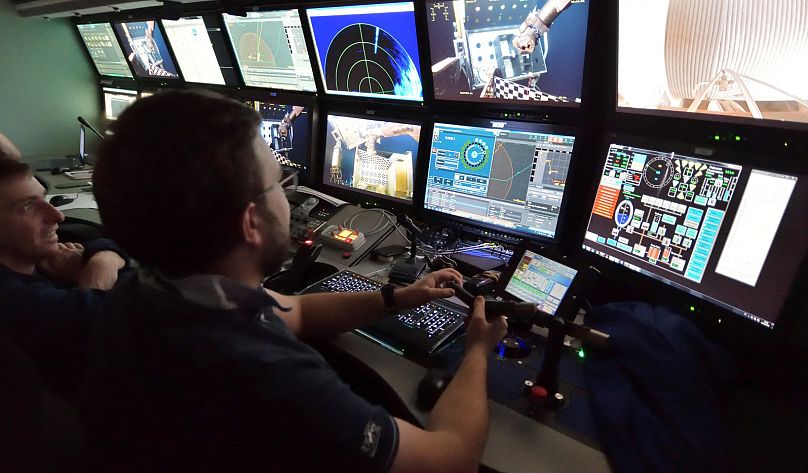As hopes fade of finding survivors on the five-man Titan submersible, a French robot has arrived over the Titanic wreck site to join the search.
Hopes are fading for the survival of the crew of the Titan, a small submersible craft that went missing on Sunday as it dived to the bottom of the North Atlantic to the wreck of the ill-fated Titanic.
As the reported oxygen reserves onboard the Titan are expected to run out, a French French oceanographic vessel L'Atalante arrived over the wreck site on Thursday bearing what many believe is the 5-man crew's only hope of being rescued - an underwater robot called Victor 6000.
L'Atalante, a research vessel operated by the French Institute for Exploitation of the Sea (Ifremer), "is currently using its multibeam echosounder to obtain a finer map of the landscape and enable Victor 6000 to dive more efficiently".
"However, this sounder will not be used to locate the submarine", according to Ifremer.
This task rests with Victor 6000.
How can Victor 6000 help?
The Titan, which is owned by OceanGate Expedition, has been missing since it dived on Sunday to the wreck at a depth of 3,810 metres (around 12,500 feet).
On board the 6.7-metre-long craft are OceanGate's CEO and founder Stockton Rush, British billionaire adventurer Hamish Harding, British-Pakistani businessman Shahzada Dawood and his son Suleman, and French explorer Paul-Henri Nargeolet.
Since it lost contact, it has a theoretical autonomy of 96 hours.
As of Thursday, its oxygen reserves could soon be exhausted, it is believed. There is no way of knowing if they have already run out or not, that is if the craft didn't sustain a catastrophic implosion event.
The Victor 6000 underwater robot is the only device in the area capable of diving to the wreck. It is remotely operated from L'Atalante via a cable that gives it theoretically unlimited autonomy.
The unmanned vehicle is capable of diving to depths of 6,000 metres (20,000 feet), deeper than any other equipment now at the site in the North Atlantic.
It also has two articulated arms that can be remotely controlled to cut cables or perform other manoeuvres to release a stuck vessel, the operator said, including attaching a cable to Titan and hoisting it to the surface.
"Victor is not capable of lifting the submarine up on its own," said Olivier Lefort, the head of naval operations at Ifremer, the state-run French ocean research institute which operates the robot.
But he told Reuters the robot could help hook the 10-tonne submersible called Titan to a ship with the capacity to lift it to the surface.
'Main hope' for Titan
This robot is the "main hope" for a possible rescue mission, said Rob Larter, a maritime expert from the British Antarctic Survey, at a press conference on Thursday.
The robot also has a powerful lighting system that could help it to locate the Titan in a completely dark environment.
Provided it knows where to look, which these experts believe it doesn't yet.
"Victor is able to do visual exploration with all the video equipment it has. It is also equipped with manipulating arms which could be used to extricate the sub, such as by sectioning cables or things that would be blocking it at the bottom," said Lefort.
Ifremer was part of the team that located the wreck of the Titanic in 1985 with American underwater archaeologist Robert Ballard.
The robot is operated by a 25-strong crew. "We can work non-stop for up to 72 hours, we don't need to stop at night," Lefort added.












